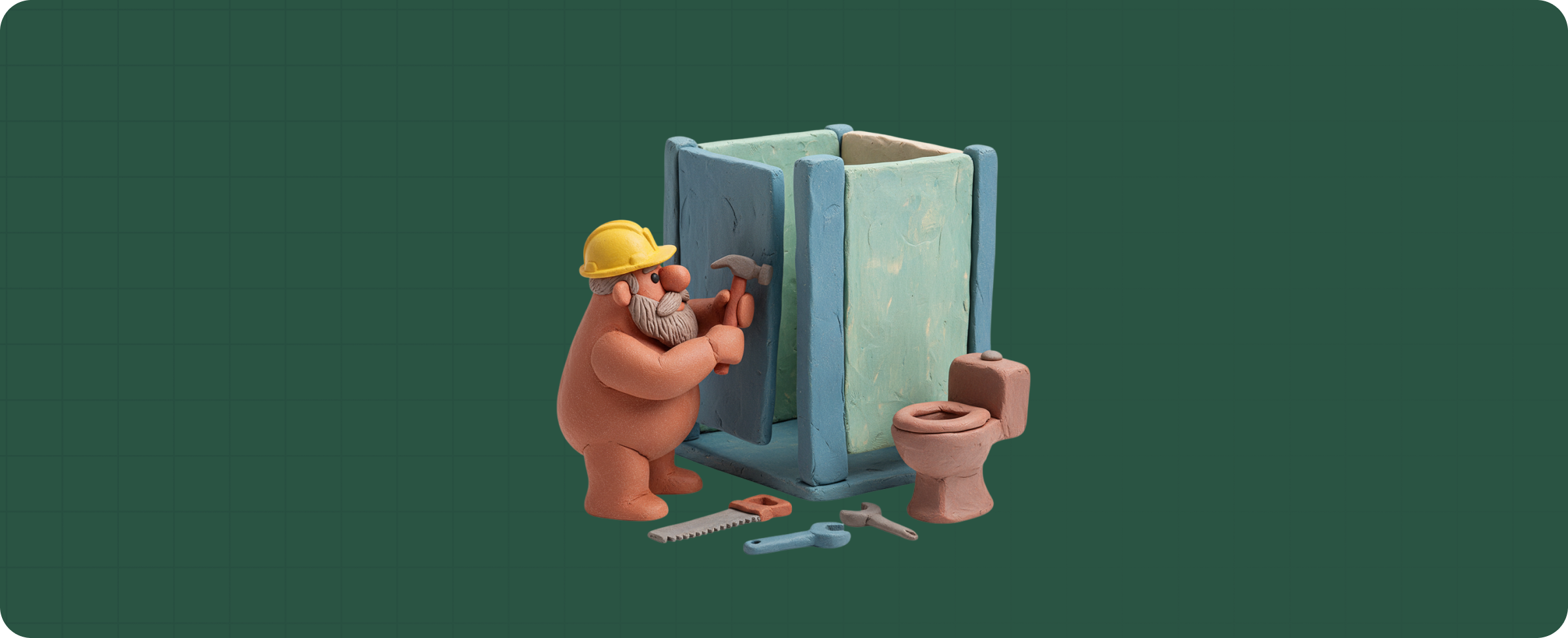What are the installation codes for restroom stalls?


Bathroom stall dimensions, also called toilet or water closet dimensions, are governed by the International Building Code (IBC) and ADA Standards for Accessible Design. The codes define minimum clearances, stall widths, depths, and door swing requirements to ensure safe, accessible, and compliant restroom design.
Construction and installation standards for stall dimensions
Approved construction methods and assemblies
Bathroom stalls are enclosed with partitions, typically metal, phenolic, or solid-surface panels, mounted to floors, ceilings, or walls. Installation must respect required clearances:
Workmanship requirements
- Partition alignment: Panels must be plumb and aligned to maintain minimum code-required clearances. Even ½ inch misalignment can reduce maneuvering space below ADA minimums.
- Door/frame tolerances: Doors must provide clear opening widths of at least 32 inches. Improperly set hinges or warped frames can reduce clearance and cause ADA noncompliance.
- Finish tolerances: Tile, wallboard, and trim buildup should be accounted for in rough layouts to prevent stalls from shrinking below code dimensions.
Coordination with other systems
- MEP intrusions: Pipes, ducts, and sprinklers cannot project into required stall clearances (IBC 1207.2).
- Grab bars: Must be installed at 33–36 in above the finished floor (ADA 604.5). Improper placement can compromise ADA usability.
Fixtures: Lavatories, urinals, or janitor sinks must not encroach into water closet clearance zones.
Firestopping requirements at penetrations
Where partitions form part of a rated corridor or restroom separation, penetrations for plumbing and electrical must be sealed with tested firestopping systems per ASTM E814 (IBC 714.3.1).
Inspection hold points
- Framing inspection: Verify rough stall dimensions before partitions are installed.
- Wallboard inspection: Ensure fire/smoke-rated assemblies are intact and sealed.
- Final inspection: Confirm ADA and IBC clearances after partitions and doors are mounted.
Typical site errors
- Partitions installed too close to the water closet, reducing clearance.
- Door swing blocking the required 60 in turning space.
- Grab bars omitted or installed outside ADA range.
- Casework or janitorial sinks reducing corridor width near restroom entries.
- Toe clearance blocked by floor finishes or blocking.
Do/Don’t table for contractors
FAQs
1. What is the minimum size for a standard bathroom stall?
Most standard stalls are 30–36 inches wide, but accessible stalls must be at least 60 inches wide.
2. How deep should a restroom stall be?
ADA requires 56 inches deep for wall-mounted toilets and 59 inches for floor-mounted toilets.
3. Do all public bathrooms need an ADA accessible stall?
Yes. IBC Section 1109.2.2 requires at least one accessible stall in every public restroom.
4. Can a restroom stall door swing inward?
Yes, if clearances are maintained. Outward-swinging doors are common to reduce obstruction.
5. What is the required clearance around a water closet?
At least 60 inches wide and 56–59 inches deep, depending on toilet type (ICC A117.1 604.3).
6. What mistakes lead to ADA stall failures?
Typical errors include partitions narrowing the clearance, misaligned grab bars, and inward-swinging doors that block maneuvering space.
References
- International Building Code (IBC) – https://codes.iccsafe.org/codes/ibc
- ICC A117.1 Accessible and Usable Buildings and Facilities – https://codes.iccsafe.org/codes/icc-a117-1
- 2010 ADA Standards for Accessible Design – https://www.ada.gov/resources/2010-ada-standards/
- NFPA 101 Life Safety Code – https://codesonline.nfpa.org



%201.png)








